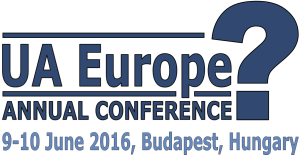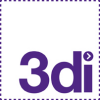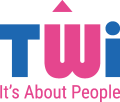Conference overview
UA Europe 2016 took place at the 4-star Danubius Health Spa Resort Margitsziget Hotel on Margaret Island in the heart of Budapest.
Conference topics included:
Lessons from Google’s User Assistance * Concise Writing for Mobile User Assistance * Moving UA into the cloud * Positioning UA within UX * Writing for the Internet of Things * Analysing Content * Learning from Developers * MadCap Flare under the Bonnet * Fostering Innovation in an Agile team * Relationships and Linking * Reusing Legacy Content * Great Content and SEO * DocOps * CSS Flexbox Layout * Effective Troubleshooting * Use of Video and Multimedia * Markdown * Building a Relationship with Support * Dynamic Publishing * CSS Colours

Speakers at UA Europe 2016
![]()
Sarah Chambers (Kayako)

Sarah is the Director of Support at Kayako, a customer support platform. She LOVES working with Technical Writers to make life easy for customers. Being dedicated to SaaS companies for the past few years, she has experience both optimising and creating help centres using the insights of the customer support team. Sarah currently lives in London, UK and splits her time rock climbing, yoga-ing and talking about customer support with anyone who will listen.
Session topic
Audrey Christophory
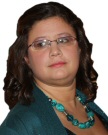
Originally from Canada, Audrey has lived and worked in Scotland since 2005. As a technical writer, she discovered that her real passion was in innovation. In 2014, she began considering ways to help others become more innovative. With a background in educational psychology and a professional start in the video game industry, gamification seemed the natural choice.
Session topic
Matthew Ellison (UA Europe)

Matthew has over 25 years of experience as a user assistance professional in the software industry. Much of this time was spent managing a team of writers and trainers at a UK-based consultancy company, before enjoying a period in the US as Director of the WritersUA Conference.
Matthew has been a highly rated and respected speaker at conferences and training events throughout the world since 1997. He now runs UA Europe, an independent UK-based training and consulting company that specialises in user assistance design and technology.
Matthew holds a B.Sc. in Electronic Engineering and a Post-Graduate Certificate of Education from Bristol University in the UK. In 2009 he was the winner of the prestigious Horace Hockley award that is presented annually by the Institute of Scientific and Technical Communicators (ISTC). In addition to his various consulting assignments for UA Europe, Matthew has been a visiting lecturer on the MA Technical Communication course at Portsmouth University. He is a certified instructor for MadCap Flare and EC Software's Help & Manual.
Session topics
Róbert Fekete (BalaBit)

Róbert has been working as a senior technical writer at Balabit (Budapest, Hungary) for over ten years, documenting complex IT security products, and developing, maintaining, and improving the Docbook-based documentation tools. He also enjoys writing technical articles and whitepapers.
Session topic
Marie-Louise Flacke (Awel-A-Ben)

For the past two decades, Marie-Louise has been involved in providing user-friendly documentation to EU organisations, focusing on usability and minimalism. She also designed courses for French universities. Her on-line Technical communication training was recently validated by the French Ministry of Education for the Master degree level. Currently, Marie-Louise provides on-site training in minimalism authoring and structured writing.
Session topic
Dave Gash (HyperTrain)

Dave is the owner of HyperTrain, a Southern California firm specializing in technology consulting and training for hypertext developers, with a web site at www.davegash.com. A veteran software professional with over thirty years of development, documentation, and training experience, Dave holds degrees in Business and Computer Science, and is well known in the tech pubs community as an interesting and engaging technical instructor. Dave is a frequent speaker at User Assistance conferences in the US, Europe, and around the world.
Session topics
Leah Guren (Cow TC)
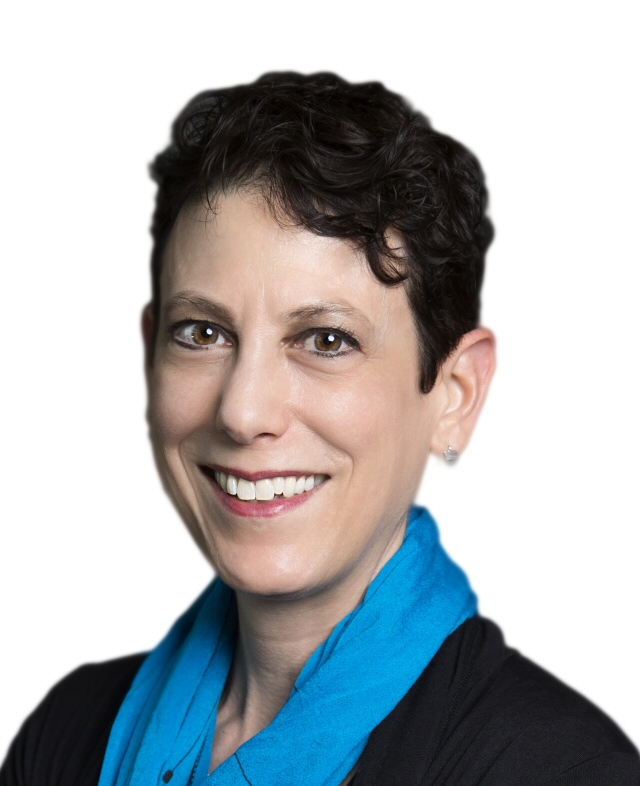
Leah is the owner/operator of Cow TC. She has been active in the field of technical communication since 1980 as a writer, manager, and consultant. She now devotes her time to consulting on content development and usability, and teaching courses and workshops in technical communication internationally. Her clients include some of the top high-tech and biotech companies, including Intel, IBM, Microsoft, Johnson & Johnson, RAD, Cisco, Given Imaging, and Rambam Medical Center. Leah is an internationally-recognized speaker in the field of technical communication and is a Fellow in STC (Society for Technical Communication).
Session topics
Pawel Kowaluk (3di Poland)

Pawel has been involved in technical communication for the past seven years. He has worked as a technical author, tool developer, and project manager. Recently, he was responsible for documentation tools and innovation at Motorola Solutions. Currently he works as the technical director of 3di Poland. Pawel is also the co-founder of soap! technical communication and a board member at ITCQF.
Session topic
Dr. Axel Luther (SAP SE)

Axel has worked at SAP since 1999 in the area of Knowledge Management and since 2014 in the new area of User Assistance. He holds a PhD in Polar Research and Geo-Science, and during his research focused on computer-based production of knowledge content. As a result, he produced the first interactive HTML-only PhD at the University of Heidelberg. In his current position of Chief Knowledge Architect, Axel focuses on the UI design of UA components and drives the topic of Multimedia Production in SAP UA. He has professional expertise in KM tools, CMS systems, XML content production, graphic design, photography and video production.
Session topic
Ronit Mayer (SAP)

Ronit is a Director of User Assistance in SAP. She has been managing documentation teams for over 10 years and has been in technical communication for even longer. Prior to technical communication, she began her career as a teacher and education is an important motivator for her. Ronit believes strongly in empowerment and engagement and has been an active mentor for almost five years in SAP. In her current role, Ronit is leading the transformation topic within SAP's User Assistance organization.
Session topic
Vincent McCaffrey (CA Technologies)

Vince is a senior tech writer, based in Prague, CZ, with a background in copyediting, teaching, and financial publishing. During his career as a tech writer, he has worked with many different types of products, from Java-based to mainframe, using a wide variety of writing tools/standards, including Author-it and Confluence wiki. As an Agile team member he advocates cross-functional contributions, performing VPAT testing and other QA tasks. Always interested in new developments, the introduction of the Agile development methodology and the opportunities this has created for improving software documentation have been a continuous point of focus in the past years. Vince has degrees in applied psychology and business, and plays the drums.
Session topic
Ulrike Parson (parson AG)

Ulrike is the CEO of parson AG, which is based in Hamburg, Germany. She looks back on almost 20 years of professional experience in technical writing. She is specialized in writing documentation for software engineers, agile project management, and consulting for knowledge management and XML-based authoring. The clients of parson include international and regional companies from various branches, such as software development, semiconductors, logistics, education, and healthcare.
Session topics
Adam Sanyo

Adam has worked as a technical writer for five different companies in the last five years, and he was involved in two DITA conversion projects (in which legacy content was converted into DITA format). He also created his own DITA course which was trialled at University of Debrecen in Hungary in 2014. Adam is currently engaged as a contract author for ARM in Cambridge, UK.
Session topic
Anikó Sebestyén (BalaBit)

Aniko works at Balabit, an IT security company. Over the past nine years, she has gained experience as a technical writer, lead author and project manager. She is passionate about usability and user-centred documentation, and is striving to bring the development team and user assistance closer together. With a strong belief in understandability, she has become an advocate of Simplified English and intends to establish a clear, consistent, inclusive, and friendly communicative voice throughout the company.
Session topic
Dr Tony Self (HyperWrite)
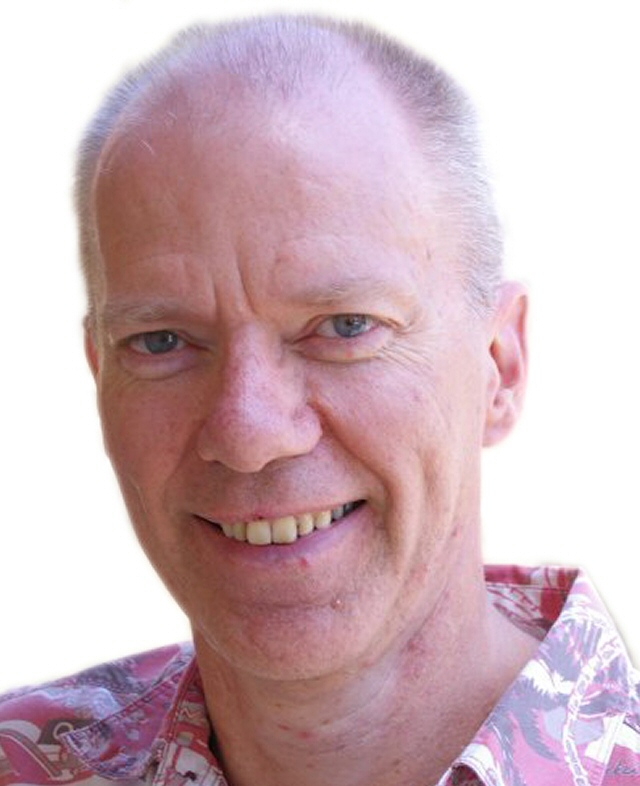
Based in Melbourne, Australia, Dr Tony Self has over 30 years of experience as a technical communicator. For over 20 years, Tony has worked in the areas of online help systems, computer-based training, and electronic documents.
In 1993, he founded HyperWrite, a company providing training and consultancy in structured authoring, Help systems, DITA, and technology strategy. Tony completed his PhD in semantic mark-up languages in 2011, and his book The DITA Style Guide was published in the same year. He is an adjunct teaching fellow at Swinburne University, and a past winner of the ISTC’s Horace Hockley award. Tony is a member of the OASIS DITA Technical Committee (and chair of the DITA Help Subcommittee).
Session topics
Willam van Weelden (WvanWeelden Consultancy)

Willam van Weelden is a Dutch technical writer and functional designer. Willam is an Adobe Community Professional, ranking him among the world’s leading experts on RoboHelp. His specialities are HTML5 and RoboHelp automation. Apart from RoboHelp, Willam also has extensive experience with other industry standard programs such as Adobe Captivate and FrameMaker. You can visit Willam at www.wvanweelden.eu.
Session topic
Joe Welinske (WritersUA)

Joe Welinske specializes in helping your software development effort through crafted communication. The best user experience features quality words and images in the user interface. The UX of a robust product is also enhanced through comprehensive user assistance. This includes Help, wizards, FAQs, videos and much more. For over twenty-five years, Joe has been providing training, contracting, and consulting services for the software industry.
Joe published the book Developing User Assistance for Mobile Apps. He also teaches courses for Bellevue College, the University of California, and the University of Washington.
Session topics
UA Europe 2016 Sessions
- Concise Writing for Mobile User Assistance (Joe Welinske)
- How to Position UA within UX (Joe Welinske)
- Seven Lessons We Can Learn from Google’s User Assistance (Matthew Ellison)
- Introducing CSS Flexbox Layout (Matthew Ellison)
- Relationships and Linking: beyond hyperlinks (Dr Tony Self)
- MadCap Flare Under the Bonnet (Dr Tony Self)
- Workshop: Don't Write Help Until You Analyse Content! (Leah Guren)
- Moving UA into the Cloud and Bringing the People Along (Ronit Mayer)
- CSS Colours Demystified (Dave Gash)
- Up with Markdown! (Dave Gash)
- DocOps: User Documentation Coming Full Circle with Agile (Vincent McCaffrey)
- Building a Closer Relationship with Support (Sarah Chambers)
- Don't Lose it, Re-use it: working with legacy content (Adam Sanyo)
- Forget Manuals, Publish Dynamically! (Ulrike Parson)
- Writing for the Internet of Things (Pawel Kowaluk)
- Things We Learned from Developers (Anikó Sebestyén and Róbert Fekete)
- Text and Multimedia: a successful symbiosis in UA (Dr Axel Luther)
- The Innovation Game: fostering Innovation in an Agile team (Audrey Christophory)
- Great Content and SEO: a match made in Mountain View (Willam van Weelden)
- Designing Effective Troubleshooting: lessons we can learn from DITA 1.3 (Marie-Louise Flacke)
- Had I Known Then What I Know Now... (Leah Guren)
![]()
Concise Writing for Mobile User Assistance
Writing concisely is one of the fundamental skills central to any mobile user assistance. The minimal screen real estate can’t support large amounts of text and graphics without extensive gesturing by the users. Using small font sizes just makes the information unreadable unless the user pinches and stretches the text.
Even outside of the mobile space, your ability to streamline your content improves the likelihood it will be consumed effectively by your target audience.
This session offers a number of examples and techniques for reducing the footprint of your prose while maintaining a quality message. The examples used are in the context of mobile UA but can be applied to any technical writing situation.
Delegates learned:
- How research shows the problems with overly complex text in small-screen and mobile environments
- How Simplified Technical English and Plain English can improve your writing
- How aggressive redesign of traditional writing styles can significantly reduce word count and improve readability
How to Position UA within UX
User assistance (UA) continues to be an important element in software development. However, many of the activities traditionally performed by a person with a technical communication background are increasingly being absorbed into User Experience. In some respects, this is limited to a rebranding of skills to match evolving design philosophies. In other respects, design philosophies have evolved an expectation of very different skill sets to accomplish UA.
This session provide a brief overview of the world of User Experience (UX), describes the areas where user assistance plays an important role, and offers a discussion of what that means for today’s UA professionals as we move forward.
Delegates learned:
- How the field of UX defines itself and its status in software development
- How user assistance is viewed from the point of view of the UX field
- What UA professionals can do to best develop their skills and market themselves within the UX field
Seven Lessons We Can Learn from Google’s User Assistance
Google is one of the most successful software companies of all time, providing a broad array of web-based applications and cloud-based services. The company clearly takes seriously the user experience for all of its products and employs a range of innovative and well-crafted techniques to guide and support its users. These include UI overlays, embedded tips, FAQs, and context-sensitive Help. This session provides a survey of these solutions and picks out some of the most effective and successful techniques that you can emulate in your own user assistance.
Delegates learned:
- The key features of successful and effective user assistance
- How Google makes UA a key component of the UX
- A range of techniques for making your own user assistance more helpful
- How you can raise your users' awareness of new or changed features
Introducing CSS Flexbox Layout
This session provides a high–level introduction to the Flexbox Layout (Flexible Box) module, a W3C Last Call Working Draft, which aims to provide a more efficient way to lay out, align, and distribute space among items in a container. Flexbox offers a much more powerful way of positioning elements using standard CSS, without having to rely on the limited properties in the current CSS Recommendation. During the session, Matthew explains the most important CSS properties, and demonstrates how flexible web pages can be coded simply and elegantly using Flexbox techniques. With flexible design for a range of different screen sizes becoming increasingly important, Flexbox is an exciting new technology that all technical communicators should be familiar with.
Delegates learned:
- What Flexbox is, and why it is significant technology for technical communicators
- How Flexbox can simplify your code and make your content work better on a range of different screen sizes and devices
- How to write a simple piece of FlexBox code
- Where to find out more about this important new technology
Relationships and Linking: Beyond Hyperlinks
Hyperlinks are a simple idea. As an author, you highlight text in a topic and associate it with another topic. For large information sets, and for single-sourced publications, hyperlinks become hard to manage. After a while, links become broken, or irrelevant, and are hard to troubleshoot. From a user's perspective, links can sometimes cause, rather than alleviate, confusion. There are techniques to overcome these authoring and reading pitfalls, and in this session, we will explore structured links, indirect links, and relationship tables. The techniques will be demonstrated in a DITA authoring tool (<oXygen/>) and in MadCap Flare.
Delegates learned:
- What problems are associated with maintaining and using direct inline hyperlinks
- The concept of indirect linking
- How MadCap Flare supports automatic generation of structured links
- The concept of relationship tables
- How relationship tables are defined in MadCap Flare
- The concept of separation of content and context
- How relationship tables are implemented in DITA
MadCap Flare Under the Bonnet
In this presentation, we will metaphorically look "under the hood" (or "bonnet") of MadCap Flare. All of Flare's project settings and configurations are stored in XML files. And "all" means everything: targets, glossaries, master pages, conditional text, variables, etc. This provides the opportunity for some behind-the-scenes engineering of Flare projects, particularly during migration of content into Flare. For example, a Word document containing a glossary of terms in a table can be reworked into Flare's glossary XML format with a series of search and replaces. Understanding the underlying XML structure can help unlock the potential for big time (and stress) savings, particularly for large projects.
Delegates learned:
- How Flare projects are organised into files
- The basics of XML documents
- That all Flare project documents, configurations and settings are XML files
- How to edit simple XML files in a free text editor
- How to leverage the XML structure of Flare projects to simplify tedious tasks
Workshop: Don't Write Help Until You Analyse Content!
This hands-on workshop is all about analysing content and making better decisions before starting to write. You'll discuss and practise a range of techniques for focussing on the key content that helps your users to get to their goals. The workshop also helps you to recognise and eliminate superfluous content that potentially distracts users and makes your User Assistance more difficult and time-consuming to maintain. There will be writing/editing exercises and opportunities for discussion and reflection. The techniques covered are independent of any authoring tool and work well with any type of User Assistance content. You'll take away from the session a set of new tips and ideas for editing content that will be invaluable for new authors and a useful refresher for more experience technical communicators.
Delegates learned:
- How to perform a content audit and prioritise content
- How to decide the best way to use the information that is needed
- How to help users to get to their goals
- How to find creative solutions to dense content
Moving UA into the Cloud and Bringing the People Along
SAP strategy is focusing on the Cloud. In order to support our strategy, UA needs to adapt and evolve in kind. A change management project began in 2015 to support the UA organization across SAP. This project focused on identifying gaps based on observable industry trends, as well as, strengthening and enabling our talent. In 2016, our focus will dig even deeper into what we need in order to reach our goals. The UA vision is on its way to fruition. We would like to share with you our experiences, challenges and best practices from this adventure.
Delegates learned:
- About the User Assistance transformation that is taking place in SAP
- Why this transformation is imperative and what activities are happening around the change
- How the transformation affects UA staff from skills to deliverables
- About the challenges we still face as we look into the future
CSS Colours Demystified
Virtually every technical writer and online author encounters CSS hex colours like #FFFFD0, #008080, or #4DB84A at some point. But how many of us really understand them? This fun and informative session explores the science behind optical colours, covers the hexadecimal numbering system used to describe them, and explains — finally! — exactly how to use those funny-looking codes to get exactly the colours you need. Want to go home smarter than most of your peers? Don't miss this session!
Delegates learned:
- The physics differences between pigments and optics
- Why hexadecimal is perfect for coding colour values
- How to combine colour values to get specific colours
- How to use hex colours efficiently in CSS
Up with Markdown!
Technical writers are often asked to quickly produce small sections of content for various media. Instead of using large and complex authoring tools for quick authoring tasks, you can harness the power of simplified-notation markdown to quickly and easily produce content chunks that can be exported as HTML and integrated into virtually any parent document. It's fast, easy, and even kind of fun!
Delegates learned:
- What markdown really is
- How simplified syntax works
- Which tools are available
- How markdown can help you to be more productive
DocOps: User Documentation Coming Full Circle with Agile
Vincent McCaffrey (CA Technologies)
The introduction of Agile development methodologies has been a game changer for tech writers. It has become necessary to adapt the approach to tech writing to accommodate this changed environment; especially the increased velocity of development and releases that comes with it. At the same time, Agile has created many new opportunities which allow increasing the quality and value user documentation can bring.
A focus point of DocOps is to leverage these opportunities that come with Agile, but DocOps is not limited to them as will be shown. A further main point of emphasis is that DocOps is not about tools. While tools are important as enablers, they are not at the center of the DocOps strategy, which is more about the mindset and content strategy in general, one of the main points being the creation of a collaborative content creation environment which is not limited to tech writers.
Delegates learned:
- How Agile can positively influence the way tech writers work
- How to leverage this influence by employing the DocOps approach
- What advantages DocOps brings beyond the scope of Agile
- What the challenges of implementing DocOps are
Building a Closer Relationship with Support
Do you know what the support agents are doing over in their corner? It’s not all cat gifs and angry users. There’s real value to be found in working together with your support team. They are a direct line to your users! It can definitely be difficult to bridge this gap between disciplines, but your goals are 100% the same: help the customer do The Thing. Because support literally spends all day talking to customers, they have a ton of amazing data about the effectiveness of documentation, and the tasks customers are trying to accomplish.
Building a better relationship with your support team will help you build a better relationship with your users. I’ve seen first hand how coordination drives a well executed user experience all the way from self service to hands-on support. Work together better and see tangible results in your user happiness!
Delegates learned:
- The value of having support and technical writing aligned
- How to break down the silos between teams and work effectively together
- How to access and use the glorious data that support is already collecting
- The metrics that matter for support-led user assistance
Don't Lose it, Re-use it: Working with Legacy Content
If you work in field of technical writing long enough, you will experience how it feels when a company decides to introduce a new writing tool or structured authoring, for example, by adopting DITA. Making the initial transition can be a real struggle. For writers, the struggle starts when they need to learn the tool, the new tagging, and continues when the old content needs to be imported into the new system. Revisiting legacy content is never easy, but you can prepare for the task with a good plan to make your life easier. My presentation will cover different types of decisions that companies must make when they rework their legacy content.
Delegates learned:
- How to separate different topic types quickly
- How to find the right people for the given tasks
- How to transfer to writers the skills that they need
- What are the financial considerations of a rework exercise
Forget Manuals, Publish Dynamically!
The traditional approach of publishing documentation as manual or online help that covers one target group, one purpose, and one specific product variant cannot cope with the new challenges on technical communication. These challenges arise with the "Internet of Things". With the growing digitalization, content needs to be delivered dynamically, according to the usage scenario and user context.
The technical information of the future needs to be modular and enriched with metadata so that smart applications can use it appropriate to the context. Technical writers have long since worked with metadata, but mostly for filtering content and controlling publication. But many of us still think of documentation as manuals. We need to leave this confinement and turn technical documentation into bits of knowledge that are delivered to the users dynamically. The session presents the requirements that technical documentation needs to fulfil for dynamic publishing and gives an overview of current technical solutions for content delivery.
Delegates learned:
- What content delivery means
- The importance of metadata and topic-based authoring
- How to classify content for dynamic delivery
- Which technical solution you can use to deliver content
Writing for the Internet of Things
The "Internet of Things" is the next big... thing. But what is it exactly and how does it influence technical writing? In this presentation I will describe how separating content from presentation is more critical than ever before. In addition to user roles, we have to think carefully about the context of the information we provide, and the line between assistance and marketing becomes blurry.
Delegates learned:
- What Internet of Things means
- What kind of content is associated with it
- How to write that content
- What skills are needed and what team members you will need
Things We Learned from Developers
Anikó Sebestyén and Róbert Fekete (BalaBit)
Collaborating with developers is key to creating outstanding user assistance. Technical communicators can always teach a thing or two to developers in terms of usability and user assistance. However, we can also learn from developers. Striving to keep up with product changes in an Agile environment, it becomes a necessity to continuously release updates to all user assistance content.
Why not tap into the knowledge that is already available in the company? How can technical writers use the techniques and tools that developers commonly use in Agile development environments? A case study from the technical writers at Balabit.
Delegates learned:
- How to manage your document configurations and improve delivery processes using development version control systems
- How to use continuous integration (CI) tools to automatically build, test, and release your docs
- How to run automatic tests to check your documents for errors
- How to flexibly enforce terminology, language, and style-related rules and be consistent with the software
Text and Multimedia: a successful symbiosis in UA
Classical text-based software documentation is losing its relevance and attractiveness to today's new generation of users. Multimedia elements help to provide an overall UA portfolio that is easy to use, easy to remember, modern and appreciated by the target group. Within SAP, we made the shift from a classical text-based Knowledge Management organization to User Assistance organization that produces all kinds of media as well as UA tools and features. This presentation includes demonstrations of various video formats, such as Inspirational Videos, What’s New videos and How To videos.
Delegates learned:
- Why the game has changed
- How multimedia has become an important additional feature in the UA of SAP software products
- About future multimedia formats and features that SAP plans to incorporate in its UA
- Insights on the change management to establish these new concepts within a large team of content developers
The Innovation Game: fostering innovation in an Agile team
Innovation is the Holy Grail of business. The CEO may dream of being the next Steve Jobs or Bill Gates, but that is not enough to make innovation happen. This session will present a gaming model that was developed to foster a culture of innovation in a large software development team. Audrey will cover the different streams of research that contributed to the model and how it evolved.
The focus will be on practical, reusable methods that can be adapted and applied to any environment.
Great Content and SEO: a match made in Mountain View
Willam van Weelden (WvanWeelden Consultancy)
There is so much content on the Web that the greatest challenge is enabling users to find the content that you produce. If your content is not in the top 3 Google results, you are not being found. Being found means creating content that does make the top 3. In other words: Search Engine Optimisation or SEO.
Delegates learned:
- How SEO helps you reach your goals
- The difference between findability and searchability
- The different components of findable content
- How to structure content for optimal findability
Designing Effective Troubleshooting: lessons we can learn from DITA 1.3
Marie-Louise Flacke (Awel-A-Ben)
Users spend 25% of their time dealing with errors, and rarely choose to access user assistance unless they are in trouble (trying to recover from error). Despite these two facts, 33% of user documentation gives no error support at all. As technical commication professionals, we should be helping users recover from their mistakes by providing clear troubleshooting information based on error detection, diagnosis, and correction. DITA 1.3 provides a useful model and offers three solutions that enable you to address any troubleshooting situation. Because it is strongly modular, the DITA troubleshooting topic is usable for either "Agile" or "Continuous development" projects and can also be adapted to the "Internet of Things" by using the "minimalistic" troubleshooting structure. This presentation outlines the benefits of the DITA approach to troubleshooting and describes how the same approach can be used in non-DITA projects.
Delegates learned:
- Why troubleshooting information is so important
- About the three basic steps of troubleshooting
- About the three troubleshooting categories offered by DITA 1.3
- How DITA 1.3 helps structure a troubleshooting section that adapts to all requirements
- How you can apply the lessons learned from DITA to non-DITA projects
Had I Known Then What I Know Now...
Lean Guren closes the conference with a light-hearted reflection back on her 35 years in technical communication and highlights some of the key lessons that she has learned along the way.
Exhibition and Vendor Presentations at UA Europe 2016
![]()
Exhibiting companies
Click a logo to view that company's web site.
Presentations by sponsors and exhibitors
The first day of main conference concluded with a series of presentations by sponsors and exhibitors.
The presentations were as follows:
Delivering Modern Feedback-enabled and In-Context Help based on the DITA Standard Using oXygen XML Editor
(Radu Coravu, Syncro Soft)
Radu Coravu, project manager and DITA expert at oXygen XML Editor, showed how the DITA standard and oXygen XML Editor can be used to provide an outstanding user experience for your products or services!
As an overview, attendees saw how oXygen XML Editor allows you to create, collaborate and review DITA content. An impressive set of publishing options are available from DITA to different web formats including modern online context sensitive user manuals, content optimized for mobile devices and optionally allowing feedback from users directly in the online documentation. Attendees learned how to easily create skins for published content and explored other options for embedded user assistance, where users can receive guidance directly within an application.
No "One-Size-Fits-All" Solution to User Assistance Challenges
(Patrice Fanning, TWi)
Audience analysis is essential to the development of any user assistance strategy. Who are the users? What tasks are they trying to perform? What are their information needs? What platform and format is most appropriate to address them?
In this session we’ll look at two very different user assistance solutions in the mobile arena, which TWi has supported clients with recently:
- SDK/API documentation for Wacom Ink Layer Language (WILL), which enables developers to build apps that transform mouse or touch input into onscreen graphics
- Embedded help for SAP apps built on its new Fiori platform that focuses on improved role-based user experience
![]()
Responsive Content: Beyond the Basics, using CSS
(Mike Hamilton, MadCap Software)
Building Responsive Content has traditionally been a rather technical process. While modern authoring tools can now make the process easier leveraging modern frameworks such as Google Bootstrap, or the Zurb Foundation, sometimes you need to dig deeper.
In this session, Mike showed how CSS style properties can be used in conjunction with modern responsive frameworks to give you total content control. He started with some of the fundamentals of Responsive Design such as an overview of media queries and an introduction to just how frameworks make building responsive content easier. After this introduction he then focused on controlling specific content behaviours using CSS when this content is in a responsive framework.
Make it Personal: Personalised Content with the Technical Communication Suite
(Willam van Weelden, Adobe)
The amount of content keeps growing. And so does the challenge of finding relevant content for your readers. One of the best ways of helping your readers is by providing personalised content: content matched to their skill level, roles and available products and modules.
Creating customised output requires you to indicate which content is relevant to which target audience, which skill level, etcetera. Only very expensive and advanced database solutions used to be able to provide this type of personalisation. The introduction of FrameMaker 2015 and RoboHelp 2015 gives all authors a quick and easy way to personalise content.
In this live demo, Willam van Weelden showed how easy it is to create fully personalised content.

